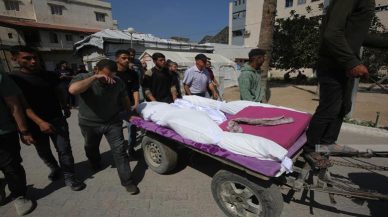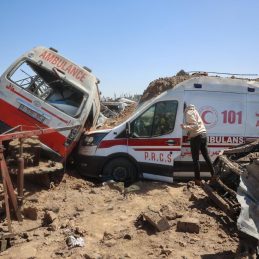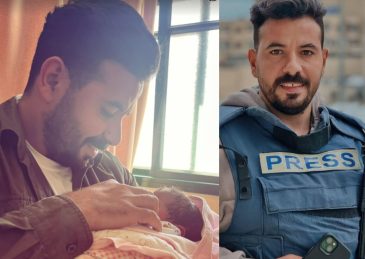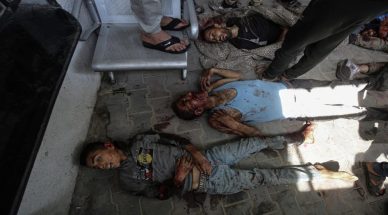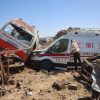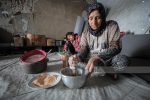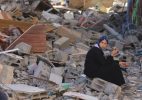GAZA, (PIC)
The Israeli occupation continues to commit a systematic crime against the education sector in the Gaza Strip, as part of a comprehensive war that spares neither stone nor soul.
What is happening in the Strip is not merely a military assault—it is a deliberate uprooting of all the foundations of life, foremost among them education, which is supposed to be the last line of defense for any society facing destruction.
Yet this last line has been demolished, leveled to the ground, leaving more than 720,000 students adrift, deprived of their desks, pens, and dreams.
Shocking statistics
Field data and the latest official statistics indicate that 95.2% of schools in the Gaza Strip have been damaged to varying degrees. Around 88.5% of school buildings require either complete reconstruction or major renovations. A total of 241 government schools have been severely damaged, and 111 have been completely destroyed. Additionally, 91 government schools and 89 UNRWA schools were subjected to direct bombing and vandalism, according to a report by the Al-Mezan Center for Human Rights.
In addition to the bombings that have targeted governmental, UNRWA, private, and charitable educational institutions throughout the Gaza Strip, Al-Mezan highlights a clear link between the forced displacement of residents and the destruction of schools.
The first evacuation orders for residents of northern Gaza Strip demanded complete displacement to the south. Occupation forces then destroyed the schools that had been evacuated in the northern areas, with a 100% destruction rate in those zones. In Gaza governorate areas that were evacuated, the destruction rate reached 92.8%. Estimates suggest that 91% of schools in Rafah, southern Gaza Strip, were destroyed following the complete evacuation orders for the city. Moreover, many schools were repurposed for military use, serving as army bases and detention centers.
The occupation army did not stop at destruction—it converted several schools into military barracks, detention centers, and torture sites, completely erasing their educational identity.
But the catastrophe extends beyond infrastructure. The following numbers speak for themselves: 13,419 students have been killed, and 21,653 injured. Additionally, 651 education workers were killed, and 2,791 wounded, according to the Ministry of Education.
As for detainees, no precise figures exist, but estimates suggest hundreds of students and teachers are still missing, with their fate unknown.
A lost academic year
As the assault enters its nineteenth month, hopes of salvaging the academic year are fading. Attempts to resume education—including through online platforms—have failed. The occupation army renewed its assault on March 18, 2025, derailing the Ministry of Education’s efforts to launch high school exams online, which were consequently postponed for a second time.
In the midst of this reality, student Marah Shabaneh summarizes the scene: “Fear is our daily companion. We’ve lost our passion and ambition. It’s hard to keep going.” Her words are not just a personal lament—they echo the collective despair of a generation whose dreams were crushed under the rubble.
Education in Gaza is completely paralyzed amid insecurity, electricity and internet shortages, and the conversion of more than 62% of schools into shelters.
Students and teachers are living under brutal conditions, sharing pain, loss, and deprivation. In this environment, it is impossible to speak of normal education—or even a viable alternative.
Yet despite everything, some initiatives still struggle to survive. In Al-Nuseirat Camp, Bassan Al-Sardi launched an educational initiative in a simple tent accommodating 150 students over three shifts, relying on volunteers. But she says, “We suffer from a lack of psychological support, insecurity, and sometimes education stops altogether due to bombings and evacuation orders.”
Student Sham Ammar reveals another side of the tragedy: “I study by sunlight or phone flashlight. I walk long distances to download lessons. I suffer from malnutrition and psychological stress.” In such conditions, neither online education nor limited initiatives can bridge the massive gap left by the assault.
The Al-Mezan Center for Human Rights has condemned the systematic targeting of the education sector, labeling it a crime of genocide against the Palestinian people. The center called for urgent international action to end the assault, lift the blockade, and hold those responsible for crimes against students and educators accountable.
What is happening in the Gaza Strip is not merely a humanitarian disaster—it is a civilizational collapse in which a major crime is being committed against hope and the future. Israel has not only killed the present, but is deliberately crushing the future and erasing every connection this people has to its right to life, education, and dignity.


